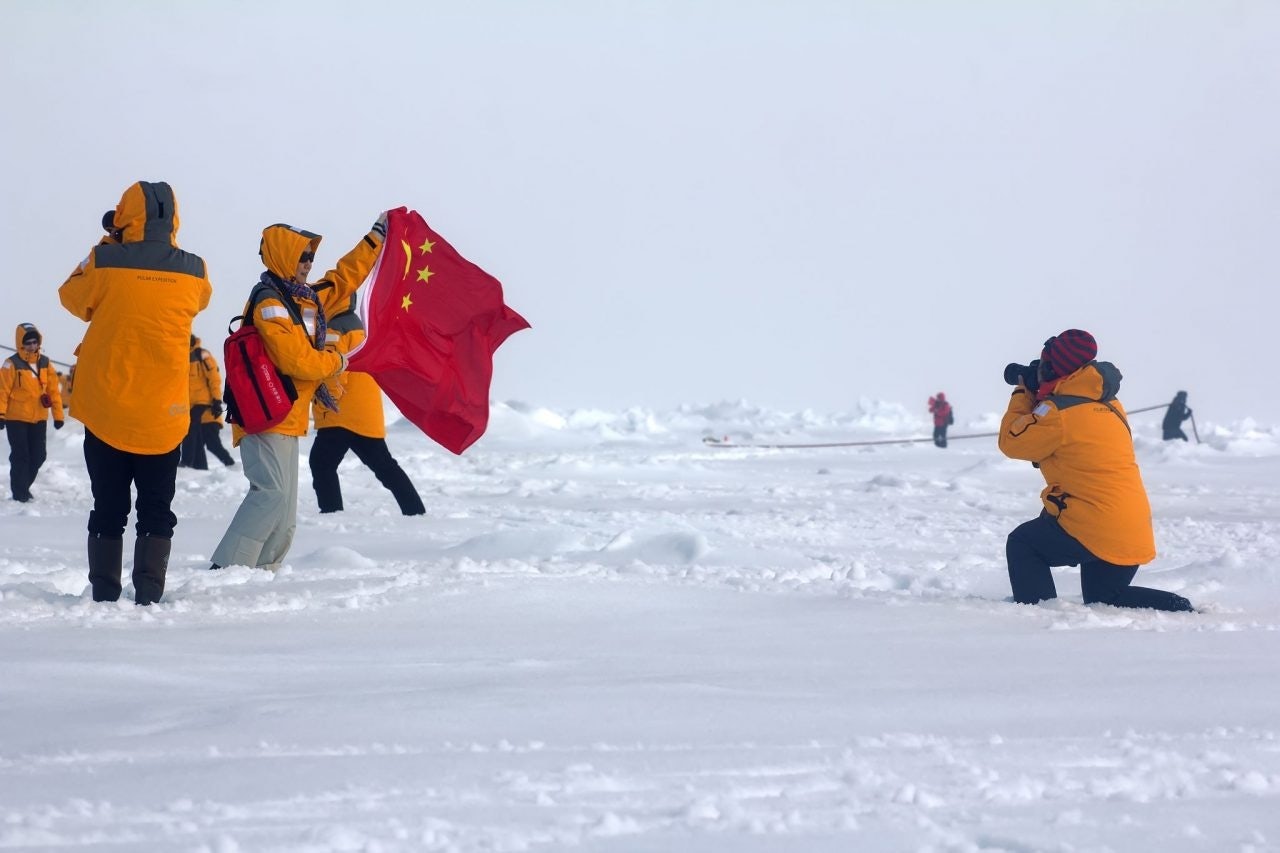Editor’s note#
: Luxury travel to the Arctic and Antarctica has become de rigueur among Chinese elites who have already been to Paris and New York. What began as affluent adventuring could now serve China's geopolitical goals. This story was originally published on Jing Travel.
China released its first Arctic Policy White Paper (中国的北极政策) last week in a move that caught international media attention and prompted criticism over Chinese geopolitical overreach.
In the White Paper, China dubbed itself a “near-Arctic state,” which it defines as an “important stakeholder” that is impacted by changes in the Arctic. Of course, China has no territory inside the Arctic Circle, nor any coastline in the region. What it does have, however, is a growing number of citizens who visit the Arctic region each year. With China’s ambitions in the region now clearly spelled out, expect this number to grow even faster in coming years.
To make things even more interesting from a tourism perspective, China envisions its Arctic ambitions as a part of its clumsily-named One Belt, One Road (OBOR) initiative, calling it a “Polar Silk Road,” akin to the Silk Road Economic Belt and the Maritime Silk Road that OBOR is referring to.
While OBOR, a possibly trillion-dollar project, is about much more than tourism, Chinese tourism has nevertheless been touted as one of the main benefits for OBOR-partnerships throughout Eurasia. The rationale is in many ways sound: with improved infrastructure and connectivity in the region, countries along the belt and road will likely see more Chinese tourism, and consequently, more Chinese tourist revenue. If that benefit outweighs the risks and costs associated with Chinese influence in the region is another question altogether.
The move by China to elevate its importance and stake in the Arctic region comes at a convenient time, perhaps by design. There have never been more Chinese tourists who visit the Arctic region than there was last year, and the growth of Arctic travel is far outpacing the growth of Chinese outbound tourism as a whole. If you go to a travel exhibition somewhere in China these days—whether it’s for luxury travel, adventure travel, or “mainstream” travel—you’ll be sure to see several stands occupied by tour operators that specialize in travel to the Arctic and Antarctica.
The trend ties into both the rise of Chinese independent travel, as well as the trend toward adventure and unique travel experiences. As international travel in China is reaching the mainstream for its middle and upper-middle class, a trip to, for example, Japan or the United States is no longer something to brag about to one’s peers. A trip to the Arctic, on the other hand, is an experience that truly solidifies one’s status as a world traveler.
And now, that trend also ties into China’s geopolitical goals.
While Chinese tourist arrivals in the Arctic and in Antarctica are next to nothing compared to the leading destinations, they still represent a significant proportion of all tourists who venture to these remote regions. In distant Antarctica, China is already the second-largest source of visitors, and in the Arctic, they represent an even larger share of visitors—estimated at between 25-50 percent of annual visits.
As a matter of fact, such tours are already moving into the mainstream in China. Last year, Alibaba’s online travel agency Fliggy entered a partnership with Norwegian company Hurtigruten to launch China-exclusive cruises to Antarctica. Fliggy is also mulling the possibility of launching its own vessel that will take even more Chinese travelers to these remote regions.
With China’s ambitions now enshrined in an official White Paper, the number of such tourism initiatives can be expected to grow even further and move toward the mainstream.
For China, using tourists as a tool to enshrine territorial claims is nothing new. When the territorial disputes in the South China Sea heated up a couple of years ago, cruises soon took Chinese travelers to disputed rocks claimed by other nations off the Vietnamese east coast. Next stop, the Arctic?


